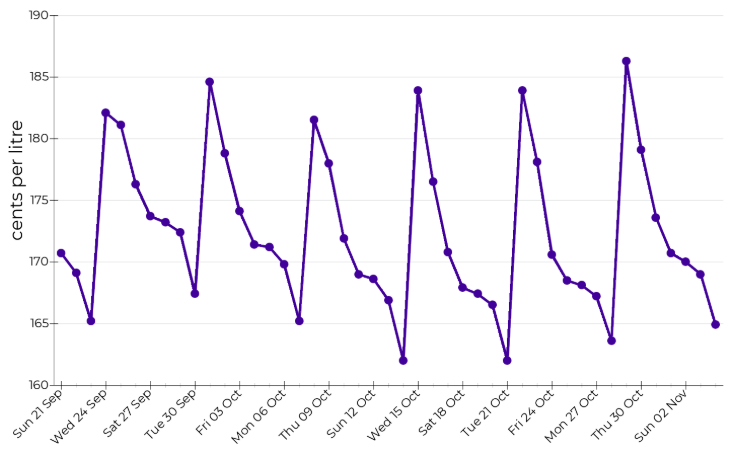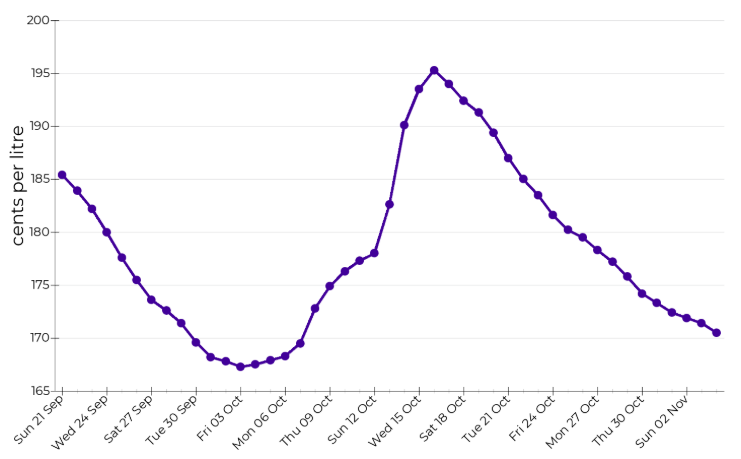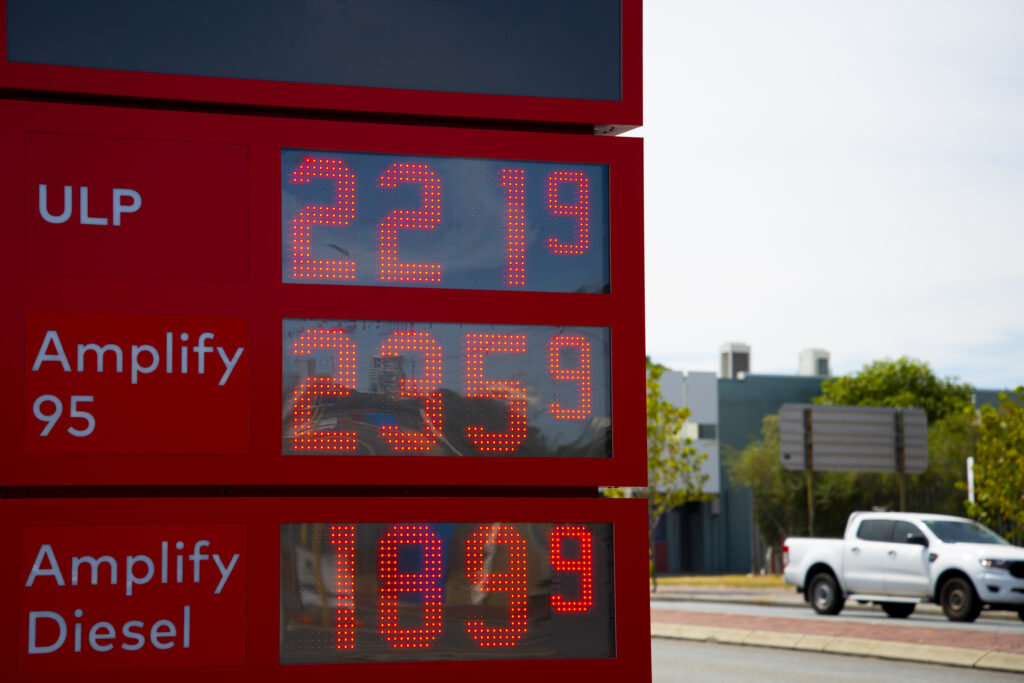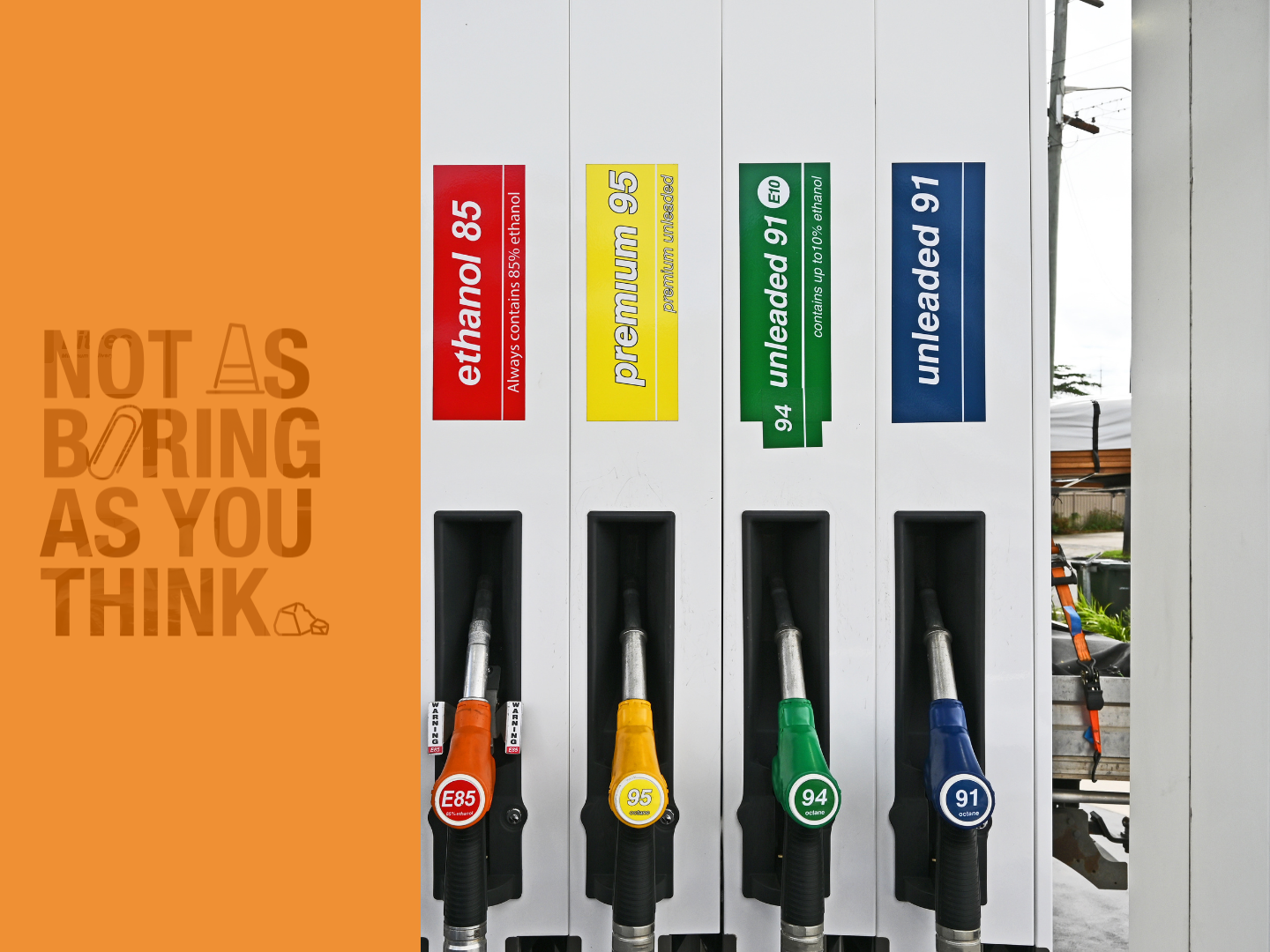Most supermarket products cost the same no matter what day of the week you buy them. Bread, milk, peanut butter – they’re predictable. Petrol? Not so much.
Supermarket prices shift with transport or production costs.
But petrol prices react to international oil markets and are shaped by local competition.
It’s a visible tug of war between competition and profit, far removed from the cereal aisle.
PUMP IT UP
Across Australia’s capital cities, this push and pull creates fuel price cycles: predictable patterns where prices rise sharply then fall gradually.
While Perth has a 7-day cycle, Sydney’s stretches over 5 or 6 weeks.
So why does Perth have a tight turnaround when the rest of Australia doesn’t?


Credit: via ACCC
FUELWATCH AND LEARN
The answer lies in FuelWatch, a Western Australian Government-run scheme introduced in 2001. It requires retailers to lock in the next day’s price by 2pm daily and publish it online for everyone to see.
It sounds counterintuitive, but this transparency doesn’t make petrol cheaper – it sets off a series of dominoes.
By showing every petrol station what their competitors will charge tomorrow, FuelWatch removes the uncertainty that usually keeps prices in check.
Once one major chain nudges the first domino by increasing its price, the rest fall quickly behind.
Over the next few days, stations try to stand their dominoes back up by undercutting each other’s fuel prices to win back customers, gradually sending prices down again.
By Tuesday night, once the lines of cars around the block have fuelled up on the cheapest day, the domino board is cleared and ready for another round.

Credit: Photon-Photos/Getty Images
SWINGS AND ROUNDABOUTS
A combination of state government policy, retailer competition and consumer habits makes Perth’s fuel cycle unique.
It’s a savvy money-saving cycle amidst a cost of living crisis – but in years to come, will it still be a staple of our city’s psyche?
As Perth slowly plugs in to electric vehicles, cheap Tuesday could quietly run out of fuel.








